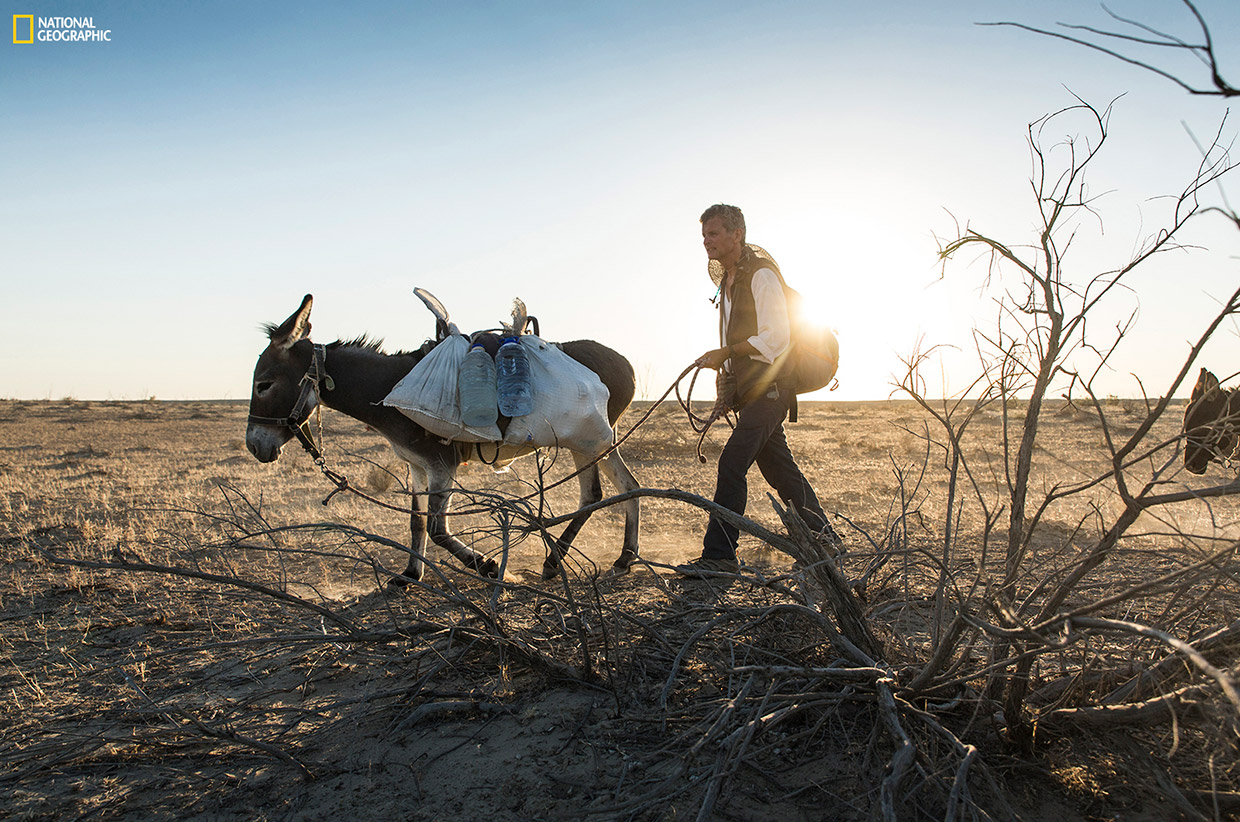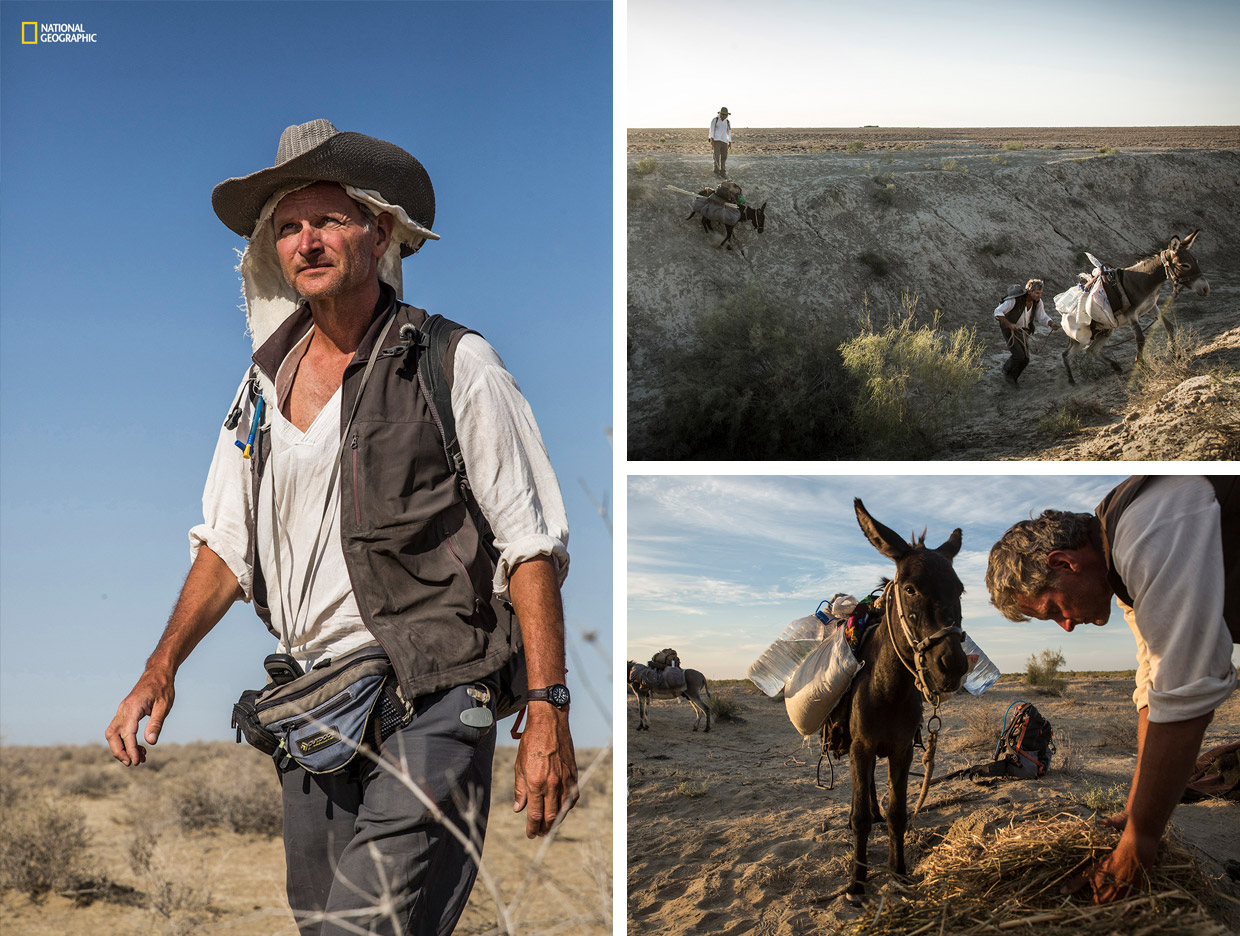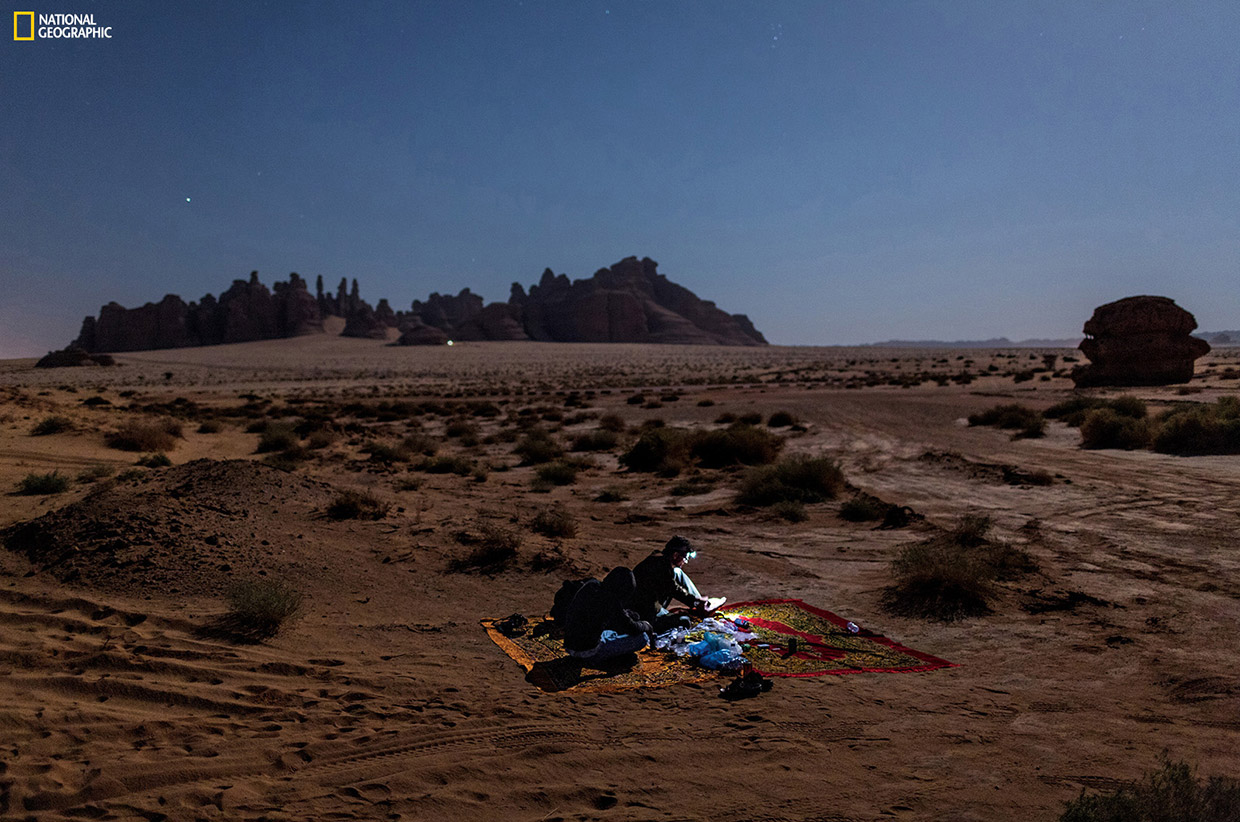Out of Eden Walk: A 10-Year Odyssey
From The Field Photograph by John Stanmeyer / National Geographic
Photograph by John Stanmeyer / National Geographic
In 2013, Pulitzer Prize-winning correspondent and National Geographic Fellow Paul Salopek set out on a 21,000-mile walk, retracing our ancestors’ global migration on foot. Salopek is following the pathways of the first humans who migrated out of Africa in the Stone Age and populated the earth. The journey is a multi-year experiment in slow journalism that can be followed online. As he travels on foot he is reporting on major stories of our time by collecting the voices and testimonies of the people he encounters along the way.
Diana del Olmo Campos: How did you come up with the idea for the Out of Eden Walk?
Paul: While trying to write a book after rotating out of a decade-long Africa stint with the Chicago Tribune, I decided that I didn’t want to go back to a newsroom. I wanted to launch my own literary journalism project based on an idea I’d been mulling over for my entire career as a foreign correspondent: how the speed of the information age was killing complexity and nuance in storytelling. So I chose to use a journey template, and focused on the oldest journey that binds all of humanity together, the first migration of Homo sapiens out of Africa back in the Pleistocene. With that general map as my blueprint, it was just a matter of rediscovering the Earth along that ancient, common pathway. In this way, it becomes everybody’s story, not just mine. And the best way to do it was to use original technology: the human foot.
By slowing down, by walking, I’m forced to spend time in communities that I would normally have flown over in a plane. The result, hopefully, is a more sophisticated narrative about the world we live in today – not a scattering of little stories that fit into neat categories or boxes, like ‘environment’ or ‘politics’ or ‘war’ or ‘culture’, but episodes that actually show how all of these global topics are interconnected, often subtly, in today’s world.
Do you approach this trip differently now than when you first started?
Not really. The model is basic – walked storytelling – and its simplicity is its strength. The only change is that I’ve become more involved with education as a mission. My partners at National Geographic, the Pulitzer Center and Project Zero all use the walk as a springboard to bring the wider world into classrooms in the US and abroad.
How has this journey changed you personally?
I’ve been a lifelong nomad, born in the US but raised in Mexico. I’ve spent my life travelling, first doing manual labour – working in gold mines, fruit orchards, and on fishing boats – and later as a journalist. I started walking out of Ethiopia on the project when I was 50. So my worldview was already pretty well established at the start. If anything, this project has confirmed what my friends, family and I have long known: movement is my natural state. I’m in my element when I’m perambulating, and in fact I think it’s the natural state for most of humanity. We’ve got restlessness in our bones. Once we settle down in cities or farms, we just express it in different forms, whether by making art, or war, or money, or babies. All human pursuits are journeys. Mine’s just a bit more bone-headedly obvious than most.


What personal sacrifices are you making in order to accomplish this trip?
I don’t have kids. I can’t – I would be an absent parent, and it wouldn’t be fair to them. That decision puts all other trade-offs in the shade.
How did you prepare before embarking in this adventure?
It’s kind of silly, in my opinion, to train for walking through the world. I mean, I jogged a bit. But really, you just put one foot in front of the other and repeat. I guess I could say that I’ve been in training for this, biologically, for about 4 million years, since my Australopithecus grandma and grandpa started experimenting with bipedalism.
What have been some of the highlights of the trip so far? What region has surprised you the most?
A Saudi friend delivered a home-cooked pizza to me in the middle of the Hejaz desert. The West Bank is like the most beautiful parts of Central California, but with Israeli Defense Force gunfire. People drive nearly naked around Cyprus. Some militia troops nearly shot me by accident in Turkey. I discovered the poetry of Georgia, especially the poems of Vazha-Pshavela. The remote western part of Kazakhstan is a giant UNESCO World Heritage site in waiting, its steppes studded with amazing archeology. I got detained 34 times by police in authoritarian Uzbekistan. I had northern Pakistan, a region as physically stunning as alpine Nepal, nearly to myself, because Western tourists avoid the place out of terrorism fears. And teaching slow journalism workshops along the trail in India has been a blast. This is just a two-minute synopsis. As for surprising – the better question is where hasn’t the world been surprising? One of the gifts of walking is that it makes the whole world new.
Have you been faithful to the original route so far or have you had to rework it due to the circumstances?
Geopolitics and war have intervened. I had to walk around the horrific tragedy of Syria. Iran wouldn’t give me a visa, and neither would Turkmenistan, so I’ve been pushed north a bit in Eurasia. No worries, though. Serendipity and improvisation are the twin mantras of this project.
Have there been times when you thought you wouldn’t be able to finish the journey?
Not yet. But I reserve the right to hang up my boots if it’s no longer challenging or rewarding.
Are you planning to publish a book based on your experiences?
Yes – I’m working on that. It’s another journey altogether.
For more information on Paul and this journey, visit nationalgeographic.org/projects/out-of-eden-walk. Written by Diana del Olmo Campos // Photography ©


